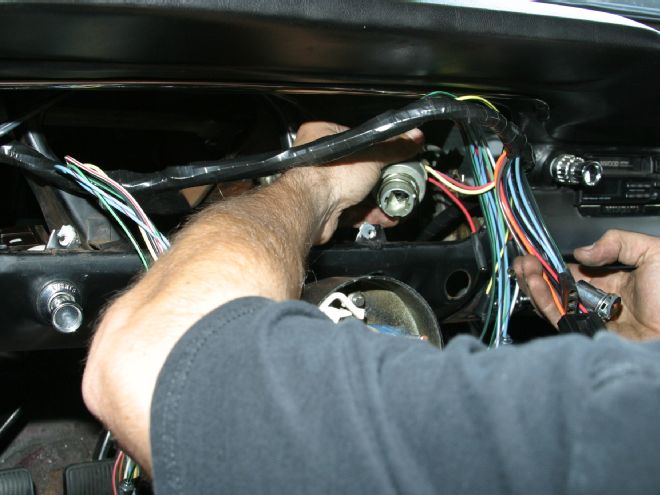
After walking car shows for more than 40 years, we have seen tons of interesting rides. Open hoods say a lot about the person who owns the Mustang and how much they know about automotive electrical systems. We see wiring bundles, splices, and connections that leave us awake at night wondering if the guy got home without help from the fire department. We’re talking horrendous electrical wiring mistakes that not only lead to darkness, but disaster. Un-protected circuits void of fuses or circuit breakers, vulnerable wiring subject to chaffing and short circuits, way too many accessories on one circuit, HID headlights without relays, big subwoofer sound systems with the original low-amp Autolite alternator and a single battery, engines not properly grounded, and the list goes on. A safe electrical system is your wealth in a classic Mustang. All wiring, connections, switches, and accessories should be adequately protected to the point where they can be considered failsafe and foolproof. We asked the pros the most common mistakes they’ve seen over the years, how to avoid them, and how to correct them.
1. Improper Grounding
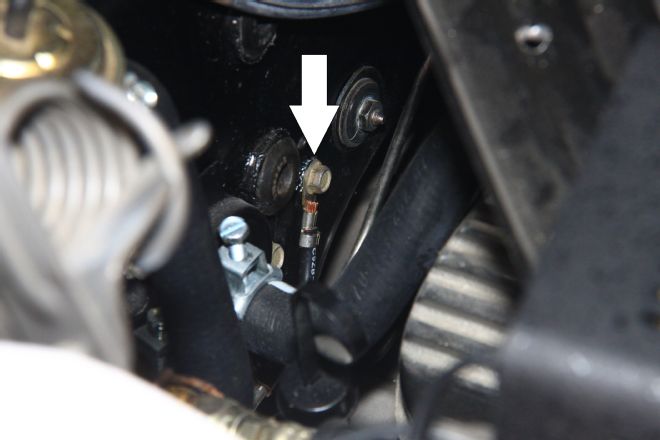
This is easily one of the most common mistakes enthusiasts make with their electrical systems. Unlike your household electrical system where you have three wires—neutral, hot, and ground—automotive electrical systems have one wire (positive) and the vehicle body/chassis (negative/ground). Electricity flows through the positive lead through to the accessory or light to negative ground at the body/chassis and back to negative at the battery. There are two theories on current flow. Some say positive to negative while others say negative to positive. Nonetheless, you must have a solid connection between the two.
“The majority of our wiring questions from customers can be traced to improper grounding,” Andrew Erichson of Painless Performance told Mustang Monthly. “You need to be sure you have completely rid a grounding surface of any paint, rust, or other contaminants.” Andrew added this also applies to painted surfaces where light sockets fit and make contact to ground. All grounding surfaces must be metal to metal.
When we spoke with Bill Tumas, CJ Pony Parts’ video restoration expert, he echoed Andrew’s comment on grounding. Improper grounding causes more electrical gremlins than any other issue. It is best to have several grounds where possible to ensure a complete circuit. You must always have a ground strap between the engine and firewall because rubber engine mounts tend to insulate the engine from the chassis (ground).
2. High Amp Devices Without Relays
We see this one all the time—too high a load for the switch or circuit-breaker capacity. If you’re lucky, this pops the circuit breaker or blows a fuse. If you’re unlucky, your Mustang will burn to the rims. Wiring, relay, and circuit-breaker capacity are crucial to proper and safe electrical-system function.
When you look at your Mustang’s electrical system like a fuel or plumbing system, it makes sense. You wouldn’t expect a 600hp engine to be able to run and make power with a 5/16-inch fuel line would you? Your engine would sputter and fall flat on its face. Not enough electrical capacity is like trying to drink a Slurpee with a cocktail straw. You can draw on that straw with everything you have until you have busted eardrums, but the icy stuff just isn’t coming. This is called resistance. Do this with a greater diameter straw and flow is plentiful and resistance low.
Wiring is the same way. If you tried to turn your Mustang’s starter with speaker wire it would immediately heat up and melt. Your high-amp starter requires very heavy-gauge cable and a starter solenoid to make the connection. Your ignition switch sends power to the solenoid, which is a relay that makes the connection between battery and starter. The starter winding energizes, thereby cranking the engine. The starter relay also gets full power to your Mustang’s ignition system for start-up.
The same can be said for high-amp devices like sound systems, electric radiator cooling fans, and high-intensity headlights. You can’t just switch them. You must have a switched relay to handle the amperage, along with the wiring capacity to handle the load. Andrew Erichson of Painless not only suggests relays, but a complete wiring package engineered to handle greater electrical loads.
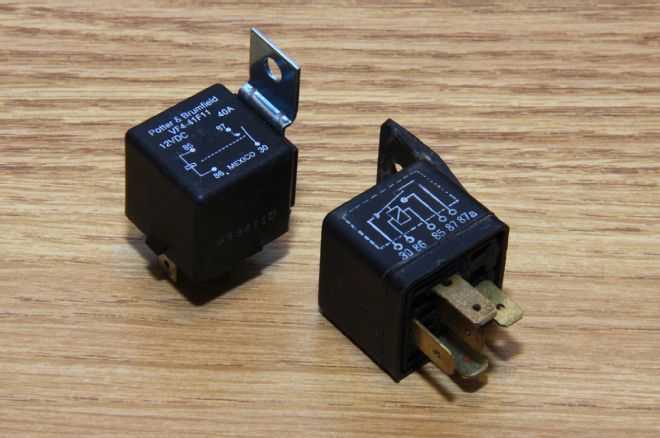
Accessories like electric radiator cooling fans, subwoofer sound systems, and high-intensity headlights pull down a lot of amps. You need a heavy-duty switching device to cycle power on and off with high-amp electrical devices. A light duty switch energizes the relay, which completes the high-amp electrical connection. Never be fooled into thinking you can run high-amp accessories through a light-duty switch.
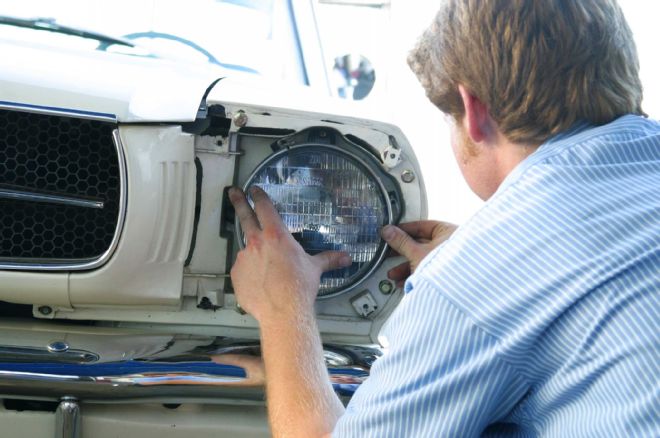
Halogen headlights can generally be powered via your classic Mustang’s headlight switch. However, if to do it right, opt for a headlight relay and take the load off your Mustang’s headlight switch.
3. Insufficient Charging System
Classic Mustang owners tend to get lost in the 1960s when it comes to electrical system demand. We perceive a 65-amp Autolite/Motorcraft alternator will carry a high-output sound system, electronic engine control, or high-intensity headlights.
If you’ve upgraded your classic Mustang with a fuel-injected 5.0L High Output V-8 engine, as one example, you will find quickly a 65-amp alternator won’t keep the battery charged. It will slowly run down until you’re unable to start the engine.
If your classic Mustang is little more than an AM/FM stereo and halogen headlamps the 65-amp Autolite/Motorcraft alternator with a solid-state voltage regulator will get you through, along with a 700 to 800 cold-cranking amp battery. If you have added power accessories and electronic engine control, you’re going to need a 130- to 200-amp alternator to keep your battery happy. While you’re at it, disconnect and bypass your Mustang’s factory ammeter. Most burned up during the first year of operation; leaving them connected makes for a fire hazard.
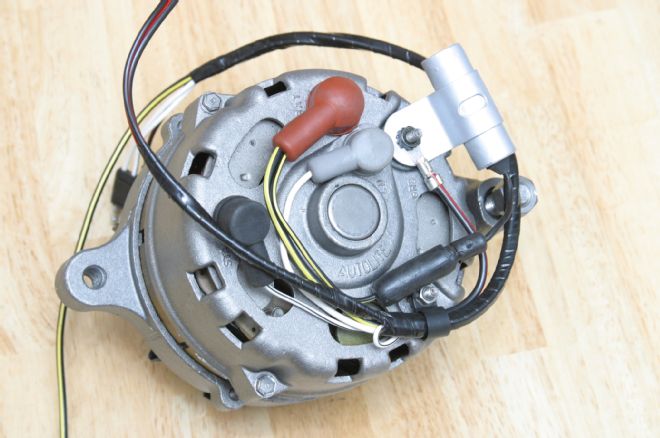
Autolite/Motorcraft 65-amp 1G alternators are adequate for concours restorations and dead-stock daily/weekend drivers—and only with solid-state voltage regulators. However, if you’ve fitted your classic Mustang with the latest modern conveniences like a hot sound system, high-intensity headlights, and electric cooling fans it will not have the capacity to keep the battery charged.
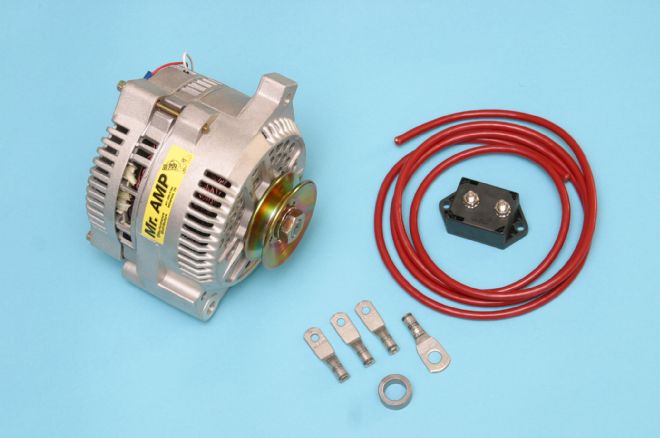
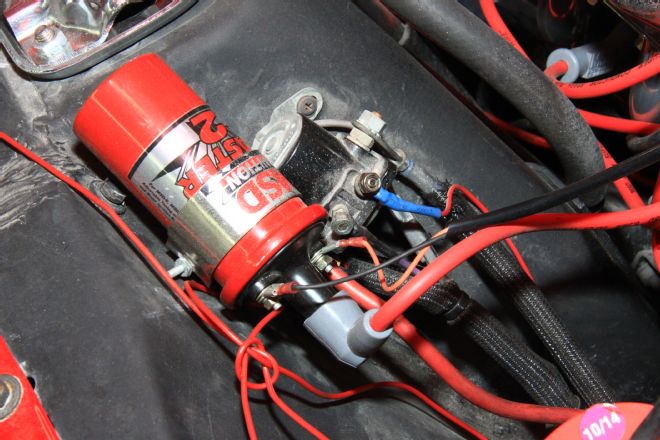
The Mr. AMP 3G single-wire internally regulated alternator from Performance Distributors is an easy drop-in replacement for your 1G charger. This guy is prewired and Performance Distributors gives you detailed instructions. Installation is easy and you’re not likely to screw it up. The Mr. AMP 3G comes with cables and circuit protection for your safety. While you’re at it, bypass your Mustang’s factory ammeter.
4. Wiring in Harm’s Way
This one ranks right up there with poor grounding. We see some of the darnedest wiring jobs in our travels, and quite frankly, it makes us nervous. Willy-Nilly unprotected wiring strung all over the place is dangerous, especially if unprotected by a fuse, fusible link, or circuit breaker. We see connections directly to the positive post or starter solenoid, with no obvious circuit protection. It spells disaster if it shorts to ground. Wiring should be wrapped and protected and follow a logical path from origin to destination. What’s more, it should be protected with a fuse, circuit breaker, or fusible link. Fusible links are generally located between the battery and main wiring loom, though, early Fords didn’t use them. A fusible link, when overloaded with a short circuit or extraordinarily high amp draw, will melt and open the circuit like a fuse does.

Your wiring should never look like this. Tangled and twisted up is hazardous to your Mustang’s health and safety. Unprotected, they become vulnerable to chaffing, heat, and the elements. And what’s with this upside-down ignition coil?
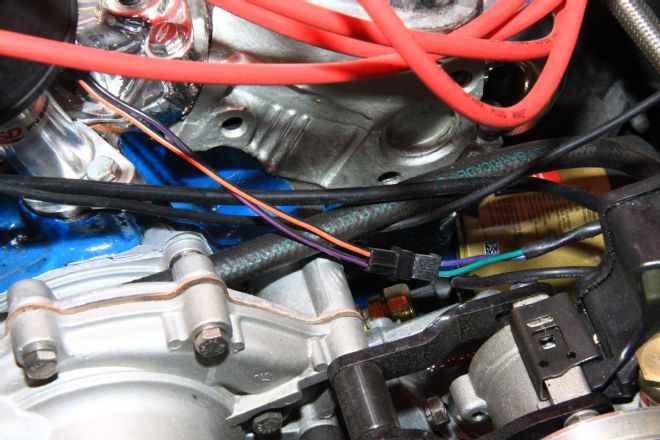
Wiring should never be this vulnerable. An engine harness, which includes ignition, senders, and charging system, should always be wrapped and protected.
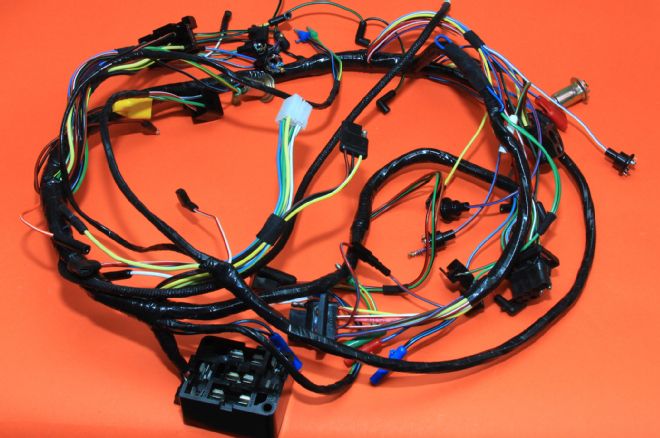
If your existing wiring harness is loaded with splices and open butt connectors, it is oftentimes smarter to replace the entire wiring harness with a new Alloy Metal harness from CJ Pony Parts. A new harness is simply safer and can be installed in a matter of hours. What makes the Alloy Metal harness superior to other reproductions is close attention to detail. Wire colors are extruded, not painted, for permanent identification. Plugs are easier to connect. Instrument lamp sockets will accommodate all LED bulbs without popping out. Too many of us try to save old wiring harnesses when it’s wiser to start over again with new.
5. Careless Splices
Careless splices are another careless mistake enthusiasts make time and time again. If you’re in the habit of using household wire nuts in your Mustang’s electrical system Andrew Erichson of Painless stressed to stop it immediately. He has seen it enough times to comment and add it to our electrical do’s and don’ts. Household electrical wire nuts work fine in home use because houses don’t move, as a rule. Automobiles move and vibrate, calling for a failsafe electrical connection. When you need to splice electrical connections, use butt connectors and crimping pliers at a minimum. Do not use diagonal cutting pliers. For best results, solder all connections and insulate them properly.
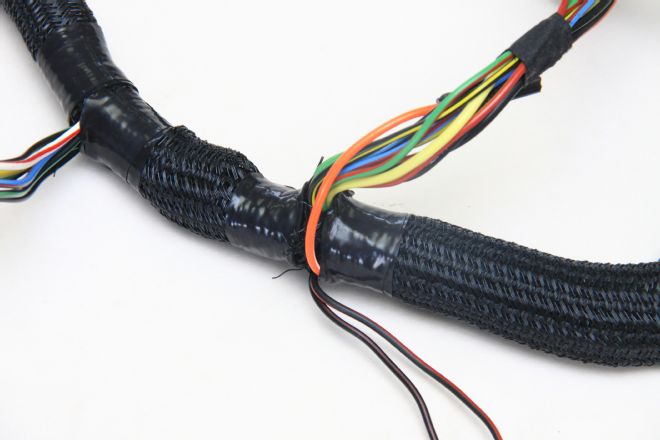
Be careful with your splices and wrapping. This is how you do it. Mustangs & Fast Fords OC (MFFOC) is installing an Alloy Metal Products stock electrical system in its 1965 Mustang convertible showroom project. Paul Gammerino of MFFOC has chosen Powerbraid from Painless Performance to protect his Alloy Metal electrical system. This is how you splice and protect a premium electrical system.
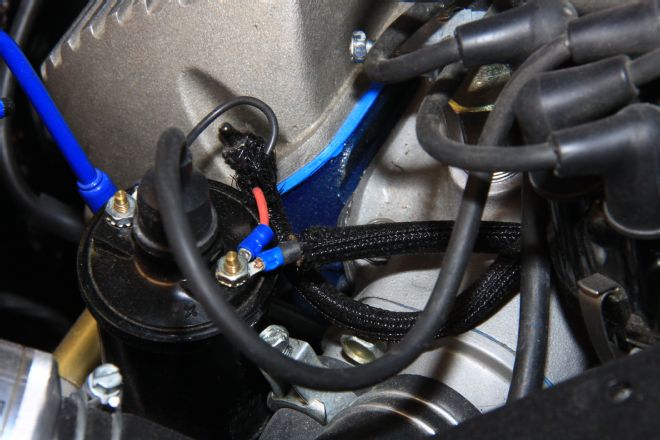
This is not how you splice and connect. These are vulnerable connections that can leave you stranded. Ideally, solder insulated boots to your ignition leads and protect them from the elements.
6. Dimmer Switch Protection
There’s a reason Ford installed this plastic insulator between the dimmer switch and floor pan. If you don’t have one, please get one immediately. The dimmer switch is made of cast aluminum and your floor pan is steel, and touching dissimilar metal can cause corrosion. This is a region where moisture can get in, so the problem becomes even more critical. You don’t want a short to ground at the dimmer switch. This piece also properly routes switch wiring.
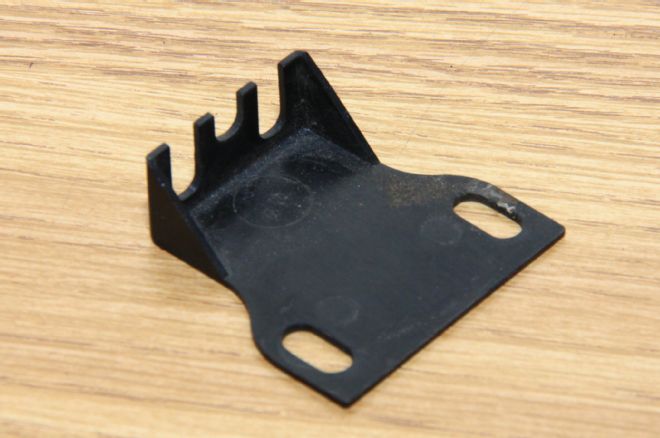
We see more dimmer switch installations void of this important insulator, which goes in between the dimmer switch and floorpan. Don’t forget to install yours.
7. Improper Use of Tools
“It is always surprising to me how many people get into their Mustangs to do electrical work without a set of wire strippers and crimpers,” Andrew Erichson told us from his desk at Painless Performance, “Many connectors and terminals require the use of a jaw style or rollover crimpers to be safely crimped.”
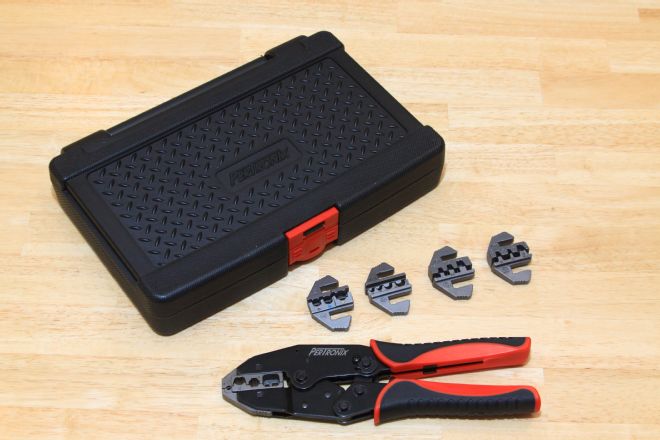
Pertronix has long been known for innovative ignition products that have made our lives as hobbyists easier. Check this out. We like this professional-grade wire crimper from Pertronix. Put your diagonal cutting pliers away and invest in this timesaving tool. It is designed to crimp virtually any size wire and yields professional results.
8. Battery Unsecured
We’re astonished how many batteries we see in Mustang battery trays that are unsecured. We’ve seen them tied down with bungee cord and coat-hanger wire. Fact is, your battery must be secured with a stud and nut battery hold-down in the interest of safety. We’ve seen batteries fall into radiator cooling fans. We’ve also seen them explode because they moved about the battery tray and shorted to ground, causing the spark that ultimately ignited hydrogen gas fumes at the battery vents. Boom!
9. Resistor Wire With Pertronix Ignition
Here’s a mistake we’ve made ourselves. Pertronix Ignition instructions are extremely specific, and they tell you to bypass Ford’s pink factory resistor wire when installing the Ignitor electronic ignition module. The Ignitor must have 12 to 14 volts to perform as designed. When you use your Mustang’s factory resistor wire, which was designed for your factory ignition coil and point-triggered ignition, the Pertronix Ignitor won’t get enough current to function properly. Another mistake we see, and have made, is proper grounding of the Ignitor module. Your Autolite/Motorcraft distributor must have the ground strap between breaker plate and baseplate or your engine won’t start. And if it starts without the ground strap, the engine will stall sooner or later.
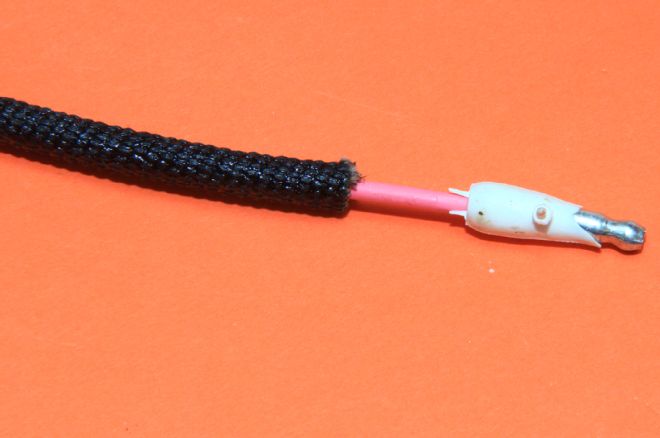
Classic Mustangs were factory fitted with this pink resistor wire, which was engineered for the original Autolite/Motorcraft ignition coil and point-triggered distributor. This wire is between your Mustang’s ignition switch and the factory ignition coil. If you’re running a Pertronix Ignitor and Flamethrower ignition coil, you must bypass the pink ignition wire. Aftermarket ignition systems must have the full complement of 12 to 14 volts to function properly. Another option is to use the Pertronix ignition relay kit and trigger the relay with the stock resistor wire, too.
10. Overloaded Circuits
Jim Thayer at Alloy Metal Products, which makes outstanding reproduction wiring products for CJ Pony Parts, National Parts Depot, and other major Mustang parts retailers, told us one of the biggest mistakes people make is to second-guess electrical engineers. We splice and look to factory fuse boxes when adding circuits, Jim tells us. Jim stressed to use the additional factory plugs Ford designed into your Mustang’s main wiring harness if you’re adding light-duty accessories. All Alloy Metal Products wiring harnesses have the auxiliary factory switched and constant live plugs found in original wiring harnesses. What’s more, all Alloy Metal harnesses have extruded color-code wiring to keep wire identification from being lost via chaffing or cleaning. You cannot remove the stripe identification.
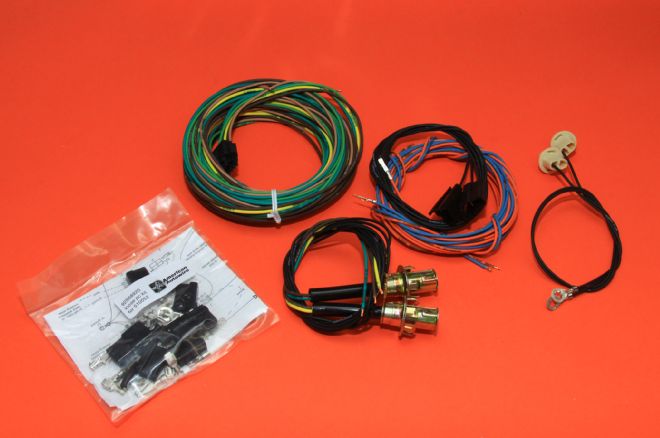
Proper wire sizing is what building a safe electrical system is all about. Too many of us improperly size wiring for the load and wind up in trouble. You’re always safer by oversizing wiring to the load. American Autowire’s website stresses proper wire sizing, switching, and circuit protection for the load. You can buy wiring systems ready made for your application or consult with American Autowire’s tech team to get the right answers.
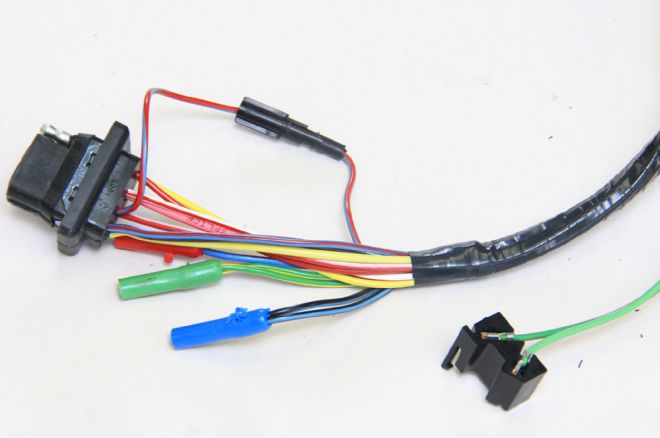
When we spoke with Jim Thayer at Alloy Metal Products about how to add circuits to the factory wiring harness he stressed using the connections Ford and Alloy Metal provide, and knowing when and how to add protected auxiliary circuits with relays for high-amp draw accessories. Never overtax the stock wiring harness with a dangerous splice.
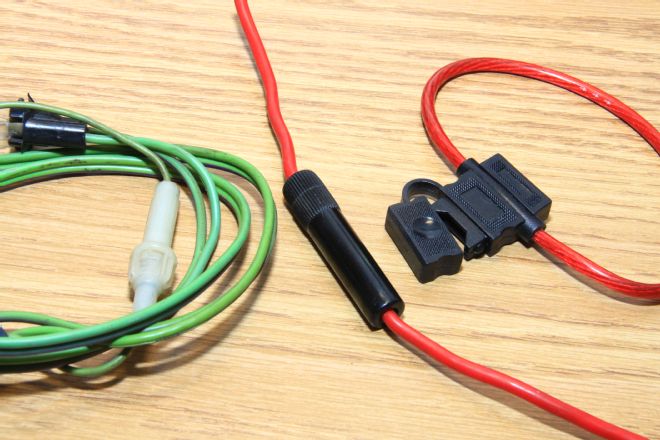
Absolutely never operate a Mustang’s electrical system without circuit protection. And never run a higher amp fuse than a circuit is designed for. Fuses are there for your protection. Bypass them or install an accessory without them and you risk fire.
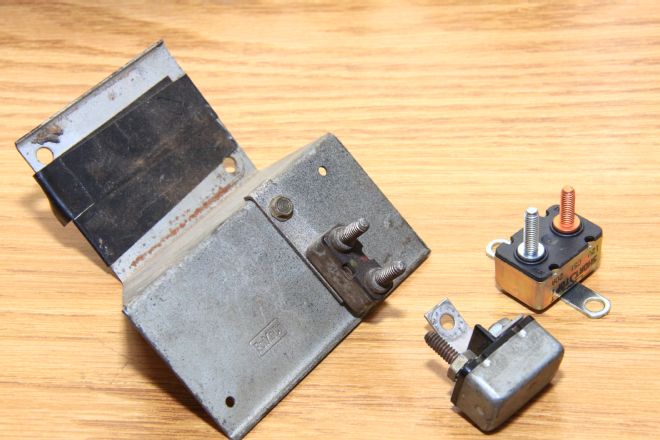
Circuit breakers do the same thing as fuses, except they automatically reset themselves when the short expires and contacts cool. Never use more circuit breaker capacity than a circuit is designed for. Your Mustang’s headlamp switch is equipped with an automatic circuit breaker. It cycles the headlights off and on when there’s a short circuit or contacts in the switch are corroded.
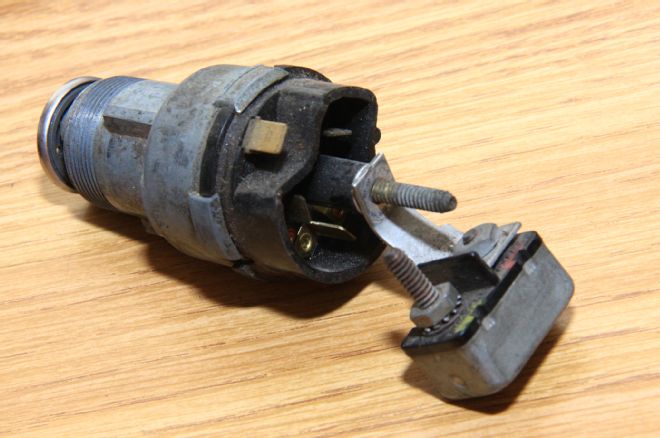
From 1965-1967 circuit breakers for accessories like air conditioning are mounted and connected on this switched post. This wasn’t one of Ford’s better ideas. It can be unsafe if it shorts out before the breaker.
11. Watch For This Post
We will always wonder what Ford electrical engineers were thinking when they came up with this one—the power post from 1965-1967 Mustang ignition switches. It is live when the ignition is on or in accessory mode. It is also vulnerable to short circuits and fire. We often add a long rubber vacuum cap or electrical tape to cover and protect the stud from accidental contact.
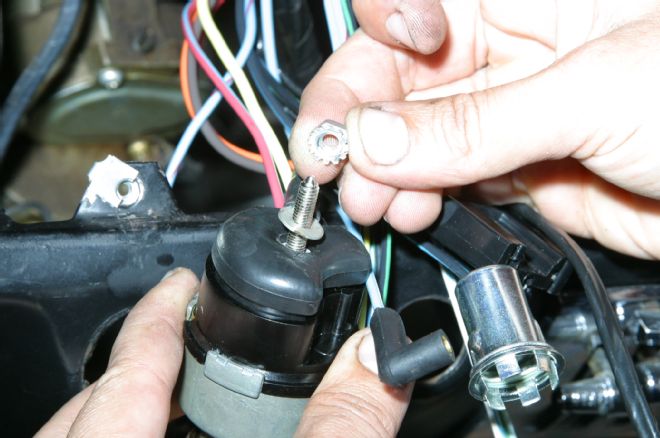
From 1965-1967 Ford ignition switches had this auxiliary power switched post. It provides power for accessories and is normally fitted with a circuit breaker but not all of them were. Always cap this post with a rubber or plastic insulator to prevent accidental short to ground experiences.
12. Not All Bulbs Are Safe
We learned this one the hard way. Periodically inspect your Mustang’s light bulbs for safety issues. Closely inspect the filament and filament support posts for distortion that can cause an internal short circuit and potentially a fire. We have experienced at least one taillight bulb internal short that melted a main wiring harness. When we traced the cause it was learned one of our taillight bulbs suffered an internal short when one post leaned over and touched the other. We’ve only seen this once, but it could happen to you.
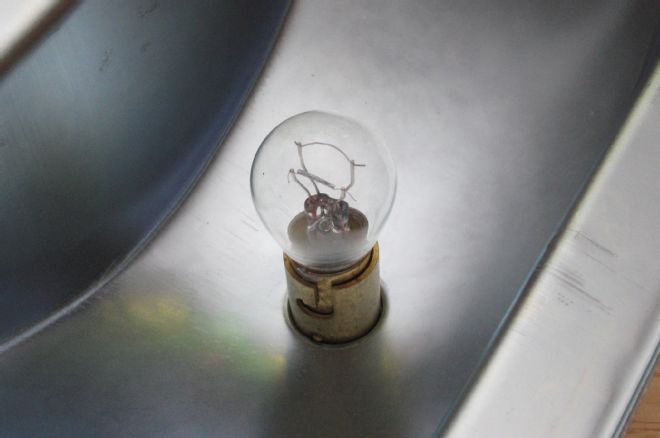
Periodically perform a light bulb inspection on your classic Mustang. Some parking and taillight bulbs have been known to short internally.